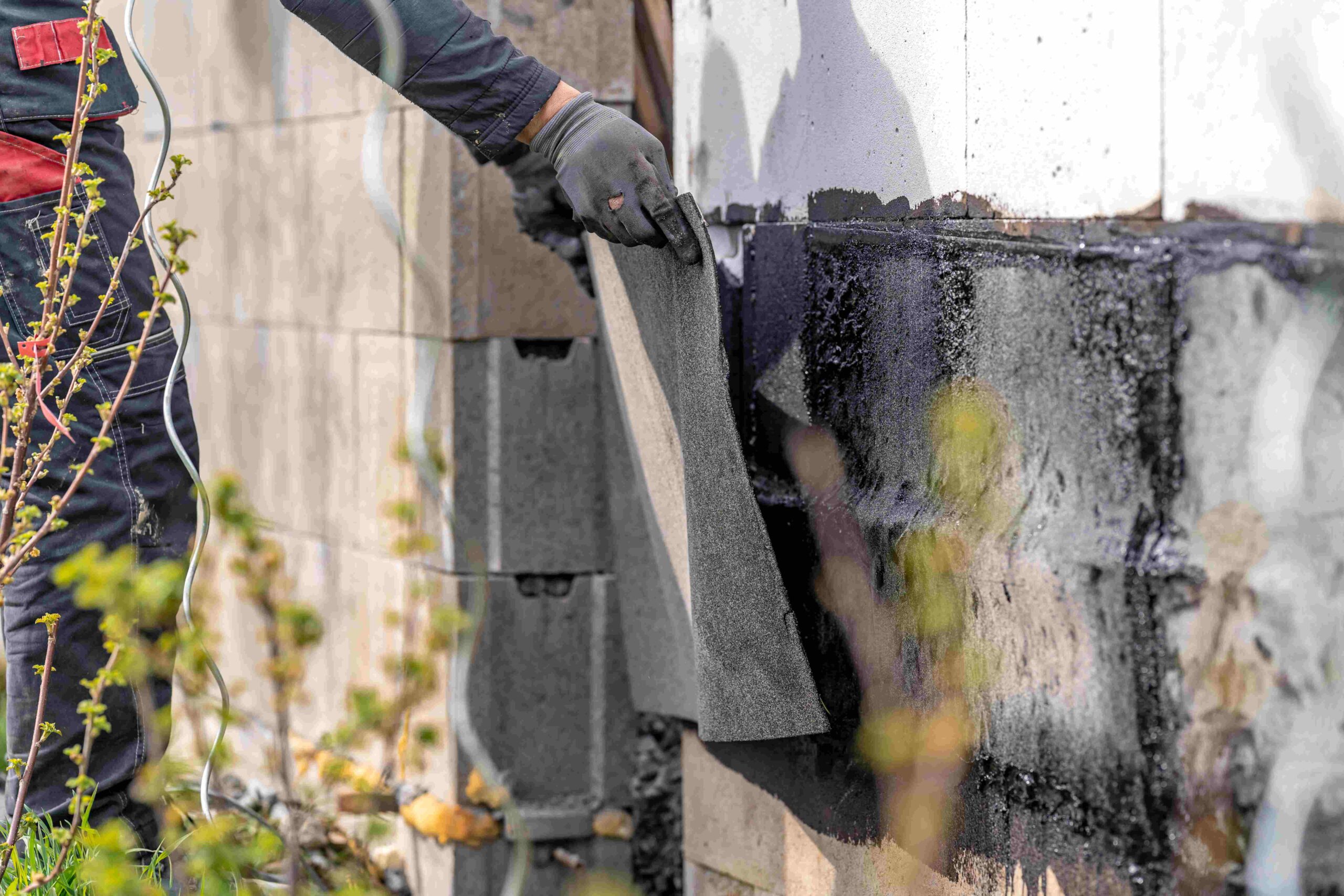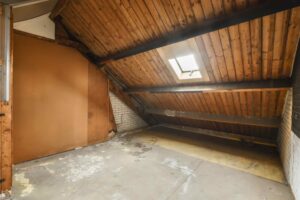The Importance of Waterproofing Your Basement
Understanding the Risks of a Wet Basement
A wet basement can lead to a host of problems that can negatively impact your home and your health. Some of the common risks associated with a wet basement include:
- Structural damage: Excessive moisture in the basement can weaken the structural integrity of your home’s foundation. Water seeping into the foundation walls can cause cracks, which can compromise the stability of the entire structure.
- Mold and mildew growth: Moisture in the basement creates an ideal environment for mold and mildew growth. Mold can spread quickly and release spores into the air, which can trigger allergies and respiratory issues.
- Damage to belongings: A wet basement can damage any items stored in the space. From furniture to electronics, water damage can be costly to repair or replace.
- Decreased property value: A basement with water issues can significantly decrease the value of your property. Potential buyers may be reluctant to invest in a home with a history of water damage.
Benefits of Waterproofing
Waterproofing your basement offers several benefits that can help protect your home and provide peace of mind. Some of these benefits include:
- Preventing water damage: By waterproofing your basement, you can effectively prevent water seepage and reduce the risk of water damage to your home’s foundation, walls, and belongings.
- Improving indoor air quality: Waterproofing helps to prevent mold and mildew growth, which can improve the indoor air quality of your home. This is especially important for individuals with allergies or respiratory conditions.
- Protecting your investment: Waterproofing your basement is an investment in the long-term health and value of your property. It helps to safeguard your home against potential structural issues and ensures that your basement remains dry and secure.
- Expanding usable space: A dry and waterproofed basement provides an opportunity for additional usable space in your home. Whether you’re considering a basement remodeling project or simply want to create a functional storage area, waterproofing is the first step towards maximizing the potential of your basement.
By understanding the risks associated with a wet basement and the benefits of waterproofing, you can make an informed decision about the necessary steps to protect your home. Stay tuned for the upcoming sections where we will explore the signs of a water problem, common causes of basement water issues, and the different methods of waterproofing your basement.
Signs of a Water Problem in Your Basement
Visible Signs of Water Damage
One of the most obvious signs of a water problem in your basement is visible water damage. This can manifest in various ways, including:
- Puddles or Standing Water: If you notice puddles or standing water in your basement, it’s a clear indication of water infiltration. This could be due to drainage issues or cracks in the foundation walls.
- Water Stains: Look for discoloration or water stains on the walls, floors, or ceilings of your basement. These stains can range from yellowish hues to dark, mold-like spots.
- Peeling Paint or Wallpapers: Excessive moisture can cause paint or wallpapers to peel, bubble, or blister. If you notice these signs, it’s likely that water is seeping into your basement.
- Efflorescence: Efflorescence refers to the white, chalky residue that forms on the surfaces of your basement. It occurs when water evaporates, leaving behind mineral deposits. This is a clear sign of water intrusion.
Musty Odor and Mold Growth
Another telltale sign of a water problem in your basement is the presence of a musty odor or visible mold growth. Excessive moisture creates the perfect environment for mold and mildew to thrive. If you notice a persistent musty smell in your basement, it’s likely that there is a water issue. Inspect your basement for any visible signs of mold, such as black or green patches on walls, floors, or furniture.
Mold not only poses a risk to your health but can also cause structural damage to your home. It’s important to address mold growth promptly and fix the underlying water problem to prevent further mold growth.
If you notice any of these signs in your basement, it’s crucial to take action to address the water problem. Waterproofing your basement can help protect your home from water damage and create a dry and secure space. For more information on basement remodeling and repairs, check out our article on basement remodeling.
In the next section, we will explore the common causes of basement water issues, helping you understand why these problems occur and how to prevent them.
Common Causes of Basement Water Issues
Poor Exterior Drainage
One of the major culprits behind basement water problems is poor exterior drainage. When the ground around your home slopes towards the foundation instead of away from it, water can accumulate and seep into the basement. This can happen due to improper grading or landscaping around the house.
Proper grading is crucial to ensure that water is directed away from the foundation. Ideally, the ground should slope at least 6 inches over a distance of 10 feet away from the foundation. This helps to prevent water from pooling near the basement walls and entering through any cracks or gaps.
Landscaping also plays a role in exterior drainage. It’s important to avoid planting shrubs or bushes too close to the foundation, as their roots can potentially damage the foundation walls and create entry points for water. Additionally, consider installing a French drain or a perimeter drain system to further redirect water away from the foundation. For more information on basement remodeling, check out our article on basement remodeling.
Cracks in Foundation Walls
Another common cause of basement water issues is cracks in the foundation walls. Over time, foundation walls can develop cracks due to various factors such as settlement, hydrostatic pressure, or freezing and thawing cycles. These cracks can allow water to seep into the basement, leading to water damage and potential structural issues.
Identifying and repairing foundation wall cracks is crucial for preventing water intrusion. Depending on the severity of the cracks, you may be able to patch them with hydraulic cement or epoxy injections. However, it’s important to consult with a professional to assess the extent of the damage and determine the most suitable repair method. For more ideas on basement finishing, check out our article on basement finishing ideas.
Faulty Gutters and Downspouts
Gutters and downspouts play a vital role in directing rainwater away from your home’s foundation. When these components are faulty or improperly installed, water can overflow or pool near the foundation, increasing the risk of basement water problems.
Regular maintenance of gutters and downspouts is essential to ensure they function properly. Clean out any debris that may clog the gutters and check for any leaks or damage. Downspouts should extend at least 5 feet away from the foundation, directing water away from the house. Consider installing downspout extensions or splash blocks if necessary.
By addressing these common causes of basement water issues, you can take proactive steps to waterproof your basement and create a dry and secure space. However, it’s important to remember that every basement is unique, and consulting with a professional waterproofing company is recommended to assess your specific situation. For more information on basement renovation, check out our article on basement renovation.
Waterproofing Methods for Basement
When it comes to keeping your basement dry and secure, there are various methods of waterproofing that can help protect your space from water damage. Two main approaches to basement waterproofing include interior waterproofing and exterior waterproofing. In this section, we will focus on interior waterproofing methods.
Interior Waterproofing
Drainage Systems
Vapor Barriers
Sump Pump Installation
A sump pump is a vital tool in managing basement water issues. It is typically installed in a pit or sump basin and helps to remove water that accumulates in the basement. When the water level in the pit reaches a certain point, the sump pump automatically activates and pumps the water out of the basement through a discharge pipe. This prevents water from flooding the basement and causing damage.
To determine the proper size and type of sump pump for your basement, it’s recommended to consult with a professional. They can assess the specific needs of your space and recommend the most suitable sump pump system.
When implementing interior waterproofing methods, it’s essential to consider the specific needs of your basement and the type of water issues you are facing. While these methods can help manage water that has already entered the basement, they may not address the root cause of the problem. For a comprehensive approach to basement waterproofing, it is often beneficial to combine interior waterproofing with exterior waterproofing methods. Stay tuned for the next section, where we will explore exterior waterproofing methods.
Remember, if you’re unsure about which waterproofing method is best for your basement, it’s always a good idea to consult with a professional. They can assess your specific situation and recommend the most effective solutions.
Exterior Waterproofing
Foundation Repair and Sealing
Foundation repair and sealing is an essential step in preventing water infiltration into your basement. Over time, cracks and gaps may develop in the foundation walls, allowing water to seep through. Repairing these foundation issues and sealing the cracks is imperative to maintain a watertight barrier.
Professionals can inspect your foundation for any visible cracks or gaps and recommend the appropriate repair techniques. Common methods include injecting epoxy or polyurethane into the cracks to seal them, applying waterproof sealants, or installing carbon fiber strips for added reinforcement.
Proper Grading and Landscaping
Proper grading and landscaping around your home can significantly contribute to preventing water from entering your basement. The goal is to ensure that water flows away from your foundation rather than pooling around it.
To achieve proper grading, the soil around your foundation should slope away from the house. This helps to direct rainwater and melting snow away from the basement walls. Additionally, installing downspout extensions and splash blocks can help to channel water further away from the foundation.
Strategic landscaping can also aid in diverting water. Planting trees, shrubs, and other vegetation away from the foundation can help absorb excess moisture from the soil and prevent water from accumulating near the basement walls.
Waterproof Coatings
Applying waterproof coatings to the exterior foundation walls is another effective method of exterior waterproofing. These coatings act as a protective barrier, preventing water from penetrating the foundation.
Waterproof coatings are typically made of materials like asphalt, rubberized asphalt, or polymer-based compounds. They are applied directly to the exterior walls and create a seamless, waterproof membrane. This coating helps to keep the foundation walls dry and protects against water damage.
It’s important to note that waterproof coatings should be applied by professionals who have experience in this type of work. They can assess the condition of your foundation, recommend the appropriate coating material, and ensure a proper application.
By addressing foundation issues, implementing proper grading and landscaping techniques, and applying waterproof coatings, you can significantly reduce the risk of water intrusion into your basement. Remember, when it comes to exterior waterproofing, it’s best to consult with professionals who specialize in basement remodeling and waterproofing to ensure a thorough and effective solution.
Hiring a Professional or DIY?
When it comes to waterproofing your basement, you may be faced with the decision of hiring a professional or tackling the project yourself. Both options have their pros and cons, and it’s important to consider several factors before making a decision.
Factors to Consider
Before deciding whether to hire a professional or go the DIY route, consider the following factors:
- Extent of the Problem: Assess the severity of your basement water issues. If you’re dealing with minor leaks or condensation, DIY solutions may be sufficient. However, if you have significant water damage or foundation issues, it’s best to consult with a professional who can provide a comprehensive solution.
- Time and Skill: Waterproofing a basement can be a complex and time-consuming task. Consider your level of experience and expertise in construction and waterproofing. If you have the necessary skills and are willing to invest the time, DIY may be a viable option. However, if you lack experience or are short on time, hiring a professional ensures the job is done correctly and efficiently.
- Budget: Evaluate your budget for the waterproofing project. DIY methods may be more cost-effective initially, as you won’t have to pay for professional labor. However, keep in mind that mistakes can be costly, and hiring a professional can provide long-term value and peace of mind.
DIY Waterproofing Tips
- Start by identifying the source of the water problem. This could be cracks in the foundation, faulty gutters, or poor exterior drainage.
- Clean and prepare the affected areas before applying any sealants or coatings.
- Use waterproofing products specifically designed for basement applications. Follow the manufacturer’s instructions carefully.
- Consider installing a sump pump to remove excess water and prevent flooding.
- Regularly inspect and maintain your waterproofing system to ensure its effectiveness.
Remember, while DIY waterproofing can be a rewarding project, it’s crucial to educate yourself on the proper techniques and materials to ensure the best results. For more information on basement finishing and renovation, check out our article on basement remodeling.
When to Call a Professional
In certain situations, it’s best to leave basement waterproofing to the professionals. Consider calling a professional if:
- You’re dealing with extensive water damage or foundation issues that require specialized knowledge and equipment.
- You’re unsure of the underlying cause of the water problem and need a thorough assessment.
- You lack the time, skills, or confidence to tackle the project yourself.
- You want to ensure a long-lasting and effective waterproofing solution.
A professional waterproofing contractor can provide a tailored approach based on your specific needs and the condition of your basement. They have the expertise to identify the root causes of water issues and implement the most appropriate waterproofing methods. To explore basement renovation ideas or learn more about basement finishing, visit our article on basement finishing ideas.
By carefully considering the factors mentioned above and weighing the benefits and challenges of DIY versus hiring a professional, you can make an informed decision that suits your needs and budget. Remember, the goal is to create a dry and secure space in your basement that will provide you with years of comfort and peace of mind.






